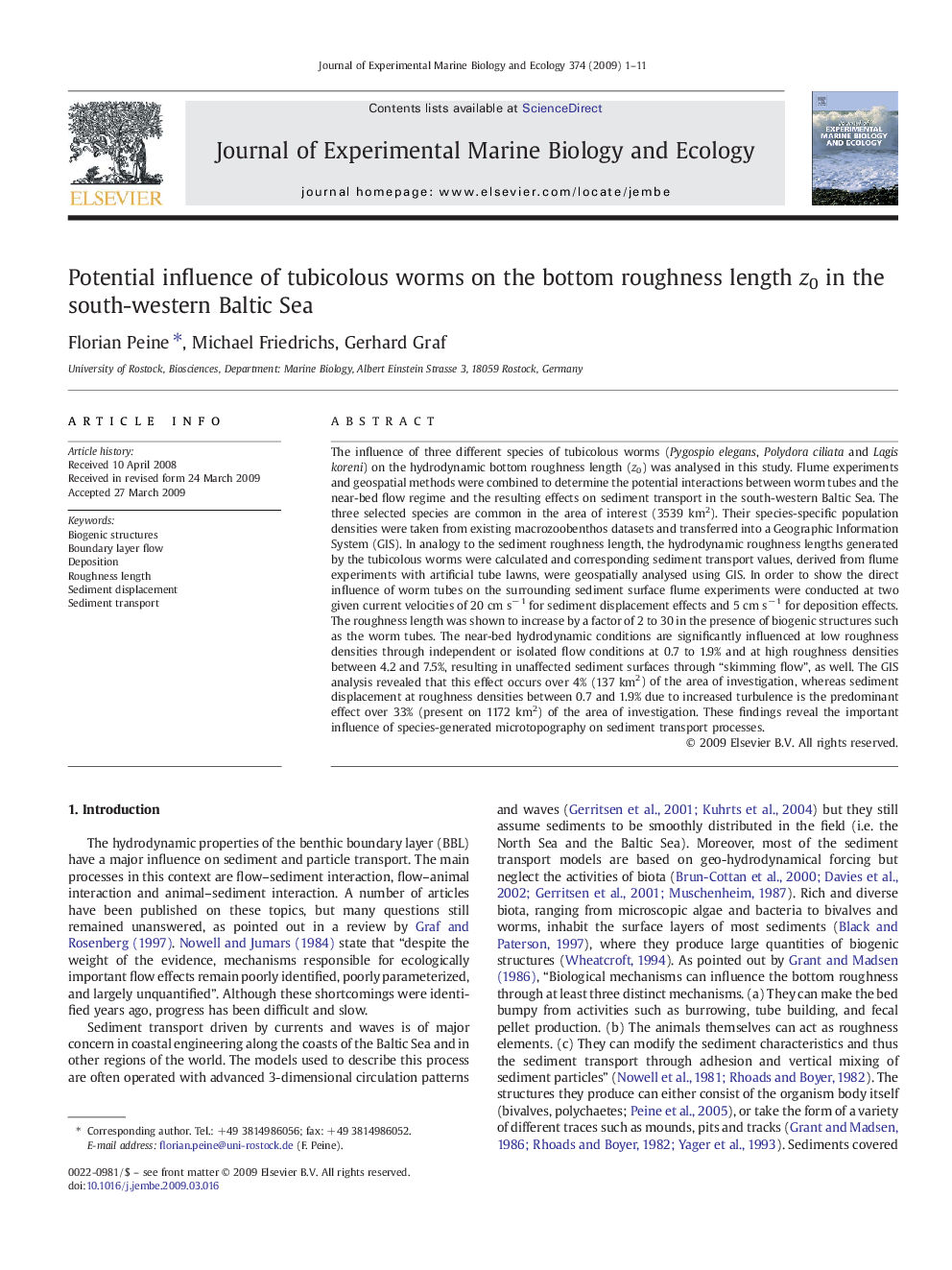| کد مقاله | کد نشریه | سال انتشار | مقاله انگلیسی | نسخه تمام متن |
|---|---|---|---|---|
| 4396963 | 1305856 | 2009 | 11 صفحه PDF | دانلود رایگان |
عنوان انگلیسی مقاله ISI
Potential influence of tubicolous worms on the bottom roughness length z0 in the south-western Baltic Sea
دانلود مقاله + سفارش ترجمه
دانلود مقاله ISI انگلیسی
رایگان برای ایرانیان
کلمات کلیدی
موضوعات مرتبط
علوم زیستی و بیوفناوری
علوم کشاورزی و بیولوژیک
علوم آبزیان
پیش نمایش صفحه اول مقاله

چکیده انگلیسی
The influence of three different species of tubicolous worms (Pygospio elegans, Polydora ciliata and Lagis koreni) on the hydrodynamic bottom roughness length (z0) was analysed in this study. Flume experiments and geospatial methods were combined to determine the potential interactions between worm tubes and the near-bed flow regime and the resulting effects on sediment transport in the south-western Baltic Sea. The three selected species are common in the area of interest (3539 km2). Their species-specific population densities were taken from existing macrozoobenthos datasets and transferred into a Geographic Information System (GIS). In analogy to the sediment roughness length, the hydrodynamic roughness lengths generated by the tubicolous worms were calculated and corresponding sediment transport values, derived from flume experiments with artificial tube lawns, were geospatially analysed using GIS. In order to show the direct influence of worm tubes on the surrounding sediment surface flume experiments were conducted at two given current velocities of 20 cm sâ 1 for sediment displacement effects and 5 cm sâ 1 for deposition effects. The roughness length was shown to increase by a factor of 2 to 30 in the presence of biogenic structures such as the worm tubes. The near-bed hydrodynamic conditions are significantly influenced at low roughness densities through independent or isolated flow conditions at 0.7 to 1.9% and at high roughness densities between 4.2 and 7.5%, resulting in unaffected sediment surfaces through “skimming flow”, as well. The GIS analysis revealed that this effect occurs over 4% (137 km2) of the area of investigation, whereas sediment displacement at roughness densities between 0.7 and 1.9% due to increased turbulence is the predominant effect over 33% (present on 1172 km2) of the area of investigation. These findings reveal the important influence of species-generated microtopography on sediment transport processes.
ناشر
Database: Elsevier - ScienceDirect (ساینس دایرکت)
Journal: Journal of Experimental Marine Biology and Ecology - Volume 374, Issue 1, 15 June 2009, Pages 1-11
Journal: Journal of Experimental Marine Biology and Ecology - Volume 374, Issue 1, 15 June 2009, Pages 1-11
نویسندگان
Florian Peine, Michael Friedrichs, Gerhard Graf,